1834-1917
Edgar Degas
Degas stood out as one of the most important artists of early Modernism. He had a special position in the group of Impressionists because of his striking, radical painting method. In particular his unique way of framing the motifs and the almost voyeuristic observations of life around him are remarkable. Central to his work too is his pioneering exploration of the potential of pastel technique, monotype, sculpture and photography.
Motifs: Portraits, history paintings, “modern life”, ballerinas, washerwomen, women at their dressing table and racehorses.
Oil on canvas
60 x 73.5 cm
1873
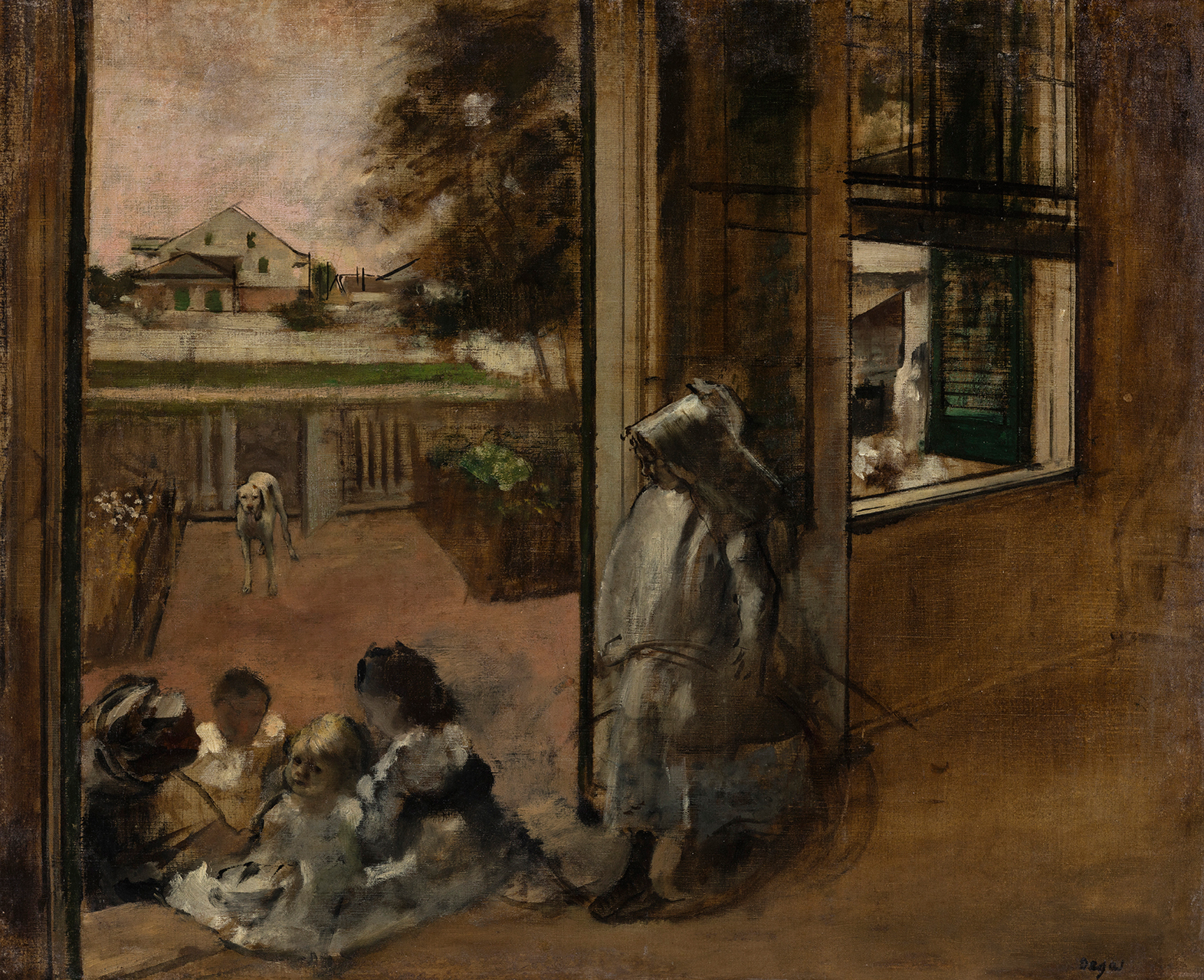
Oil on canvas
60 x 73.5 cm
1873
Courtyard of a House. (New Orleans, sketch)
The painting is included in the exhibition Discover Degas & Miss La La at The National Gallery London, England and will return in mid-September 2024.
The picture was painted during Degas’ stay with his family in New Orleans in 1872-73. He exhibited it at the Second Impressionist Exhibition in 1876 as “une esquisse” (a sketch). Precisely the sketch-like, unfinished impression is characteristic of his work from this period, and adds a great deal to the interest of the pictures.
Degas typically combines this painting method with a firmly shaped, sharply drawn contour, and the contrast between the sketch-like and the clear line strengthens the radical nature of the picture. The architecture is clearly indicated and captured by black perspective lines, while the children and the garden plants are painted very freely. This gives an overall analytical effect and leaves no impression that Degas is interested in these particular children as such. There is a degree of distance from the motif, and the dark gazes towards the observer from the dog on the garden path and from the child in the foreground sharpen our consciousness of our role as observers.
Pastel on paper
90.5 x 85 cm
c. 1898
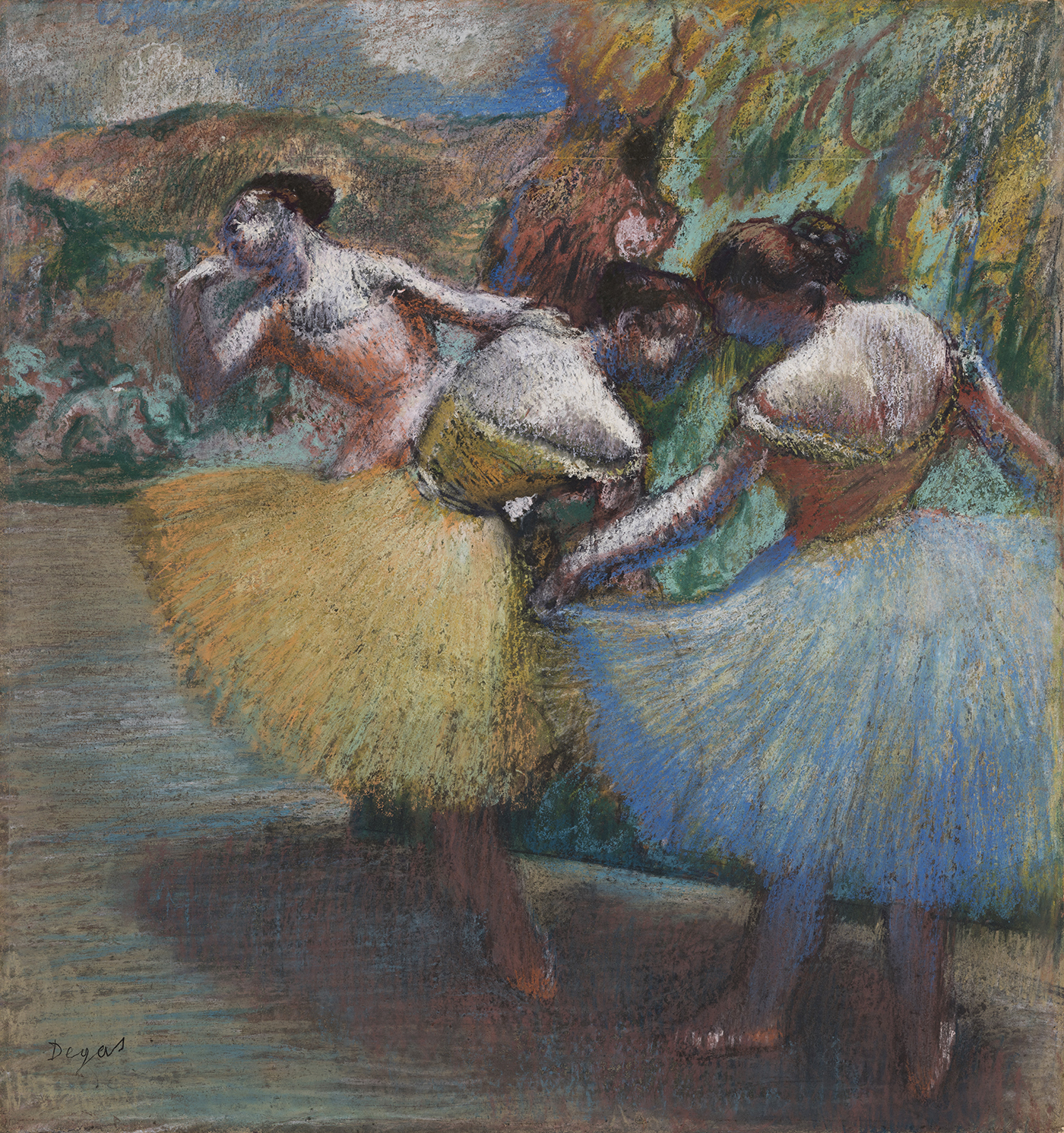
Pastel on paper
90.5 x 85 cm
c. 1898
Three Dancers
Degas was a pastel painter par excellence. Especially in his later work, which this is an example of, he explored the pastel crayon technique. He put many layers of colour on top of each other and varied his brush strokes to create the most incredible effects that in many ways can be said to anticipate abstract art.
The dancer motif was one of Degas’ favourites. In this picture it was not so much the narrative of the actual dancing or the individual dancers that he was interested in. Rather, his narrative was to be found in the explosive sensation of colour and the different structures he discovered in the surfaces. The dancers pose, but as figures they are absorbed by the intensity of the colours and by Degas’ abstract technique, and the stage – or the audience – in the background has become a purely imaginative pastel landscape.
Pastel on paper
53 x 69 cm
c. 1895-1900
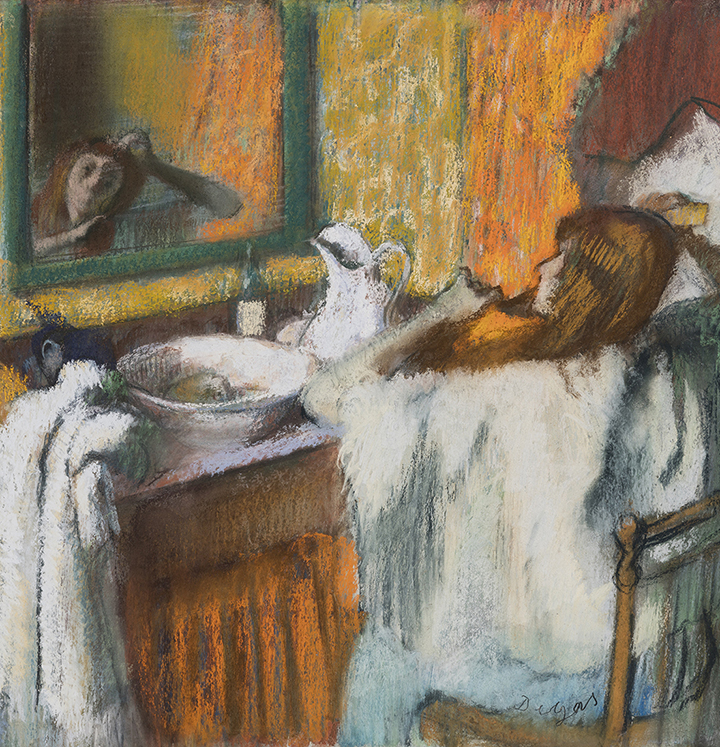
Pastel on paper
53 x 69 cm
c. 1895-1900
Woman Combing Her Hair
Looking at Degas’ pictures of women at their toilette, the observer has a feeling of being admitted to a private world. But at the same time there is often a distance built into the picture because of the viewpoint and framing. In this picture we look into a woman’s intimate boudoir and at the same time are kept at a distance. The woman is seen from above, a chair blocks the path, and her face is unclear in the mirror on the wall. These are all effects that create a charged atmosphere of both presence and absence, and which point to the observer’s fundamentally voyeuristic position in relation to the picture. This is a theme to which Degas returns again and again in his pictures of women.
Pastel, gouache and pen on paper
547 x 616 mm
1858
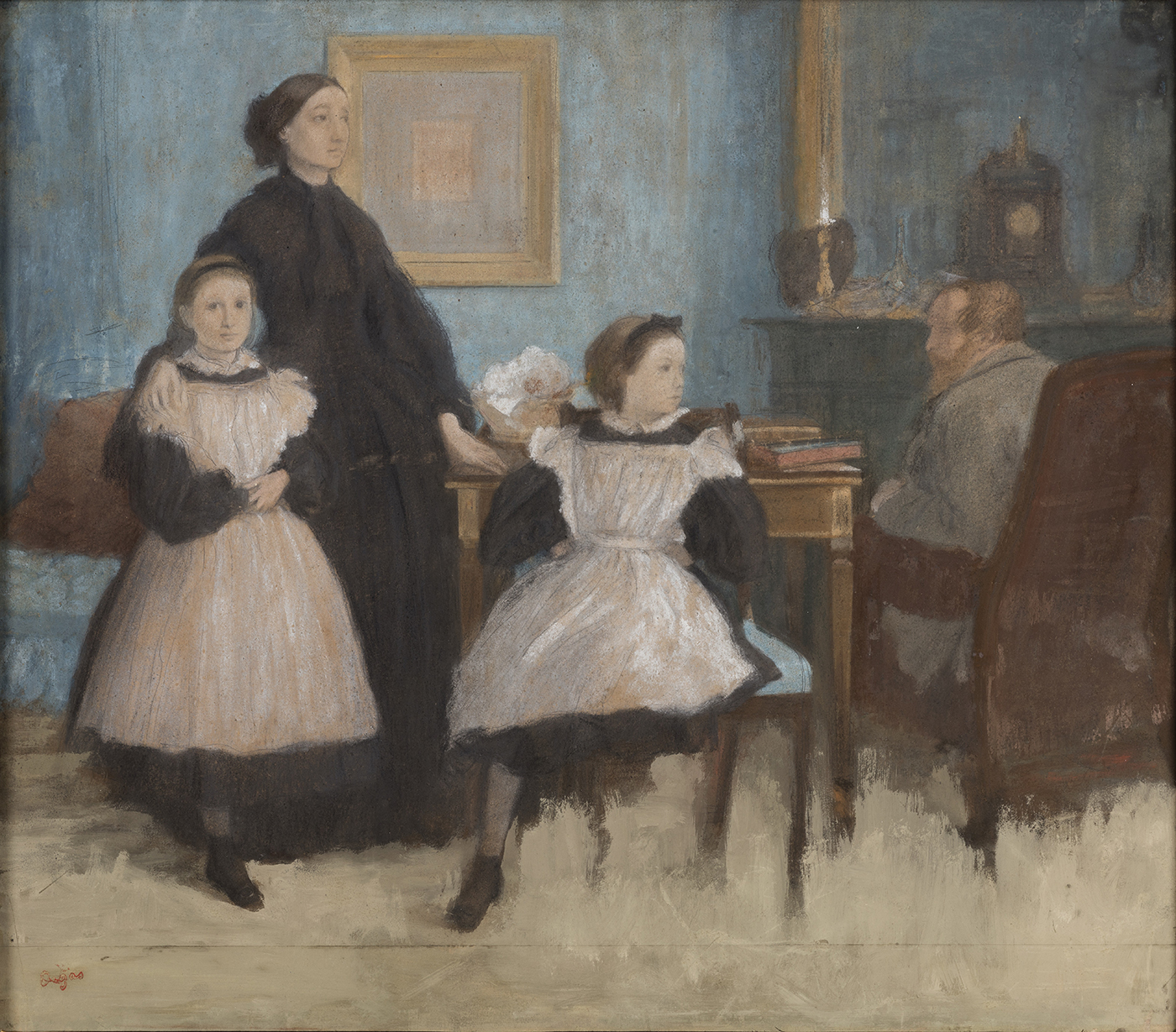
Olie på lærred
60 x 73,5 cm
1873
The Bellelli Family, Study
Pastel på papir opklæbet på lærred.
640 x 760 mm
1872-73
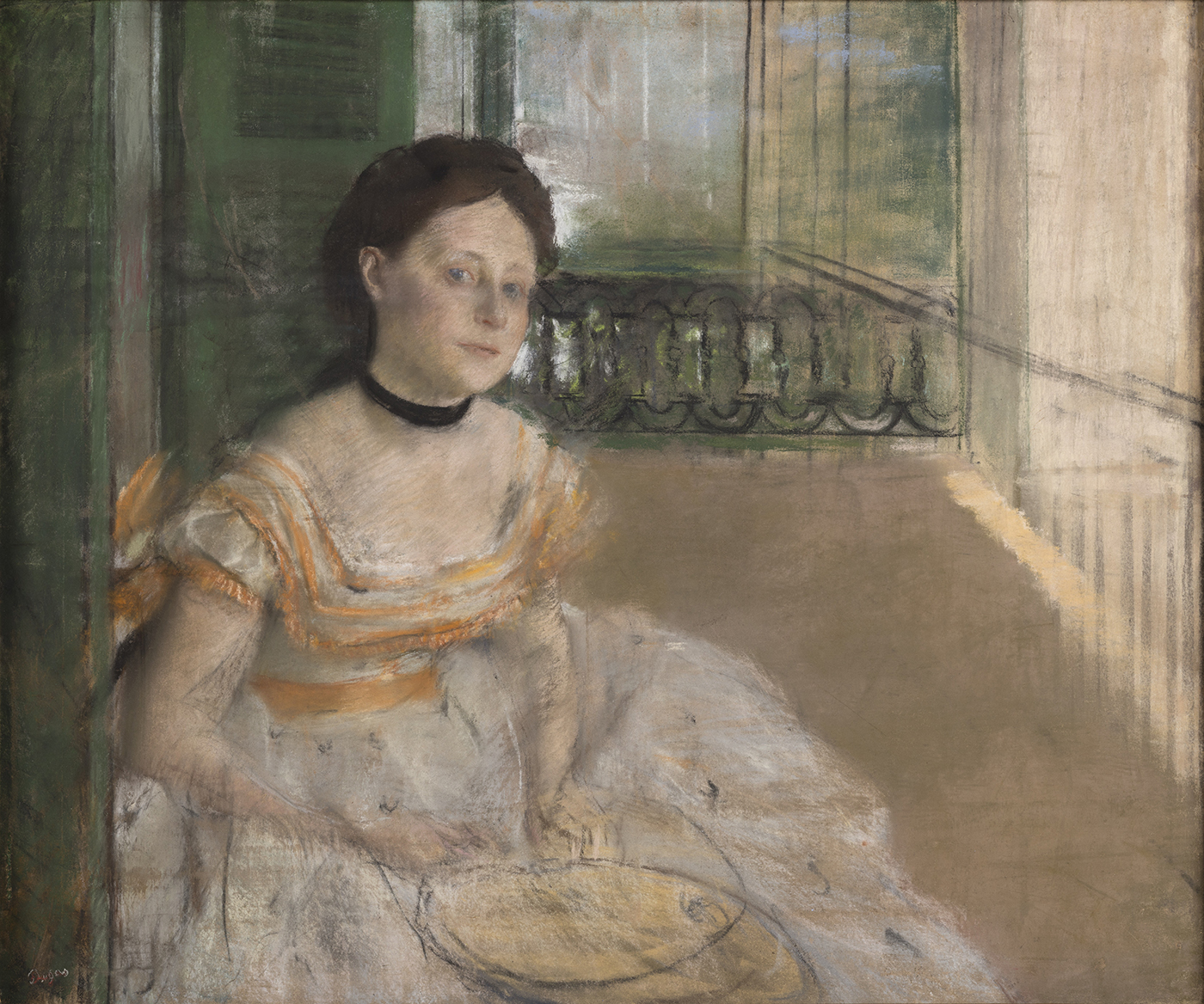
Olie på lærred
60 x 73,5 cm
1873
Woman Seated on a Balcony, New Orleans
XX
54 x 40 cm
1894
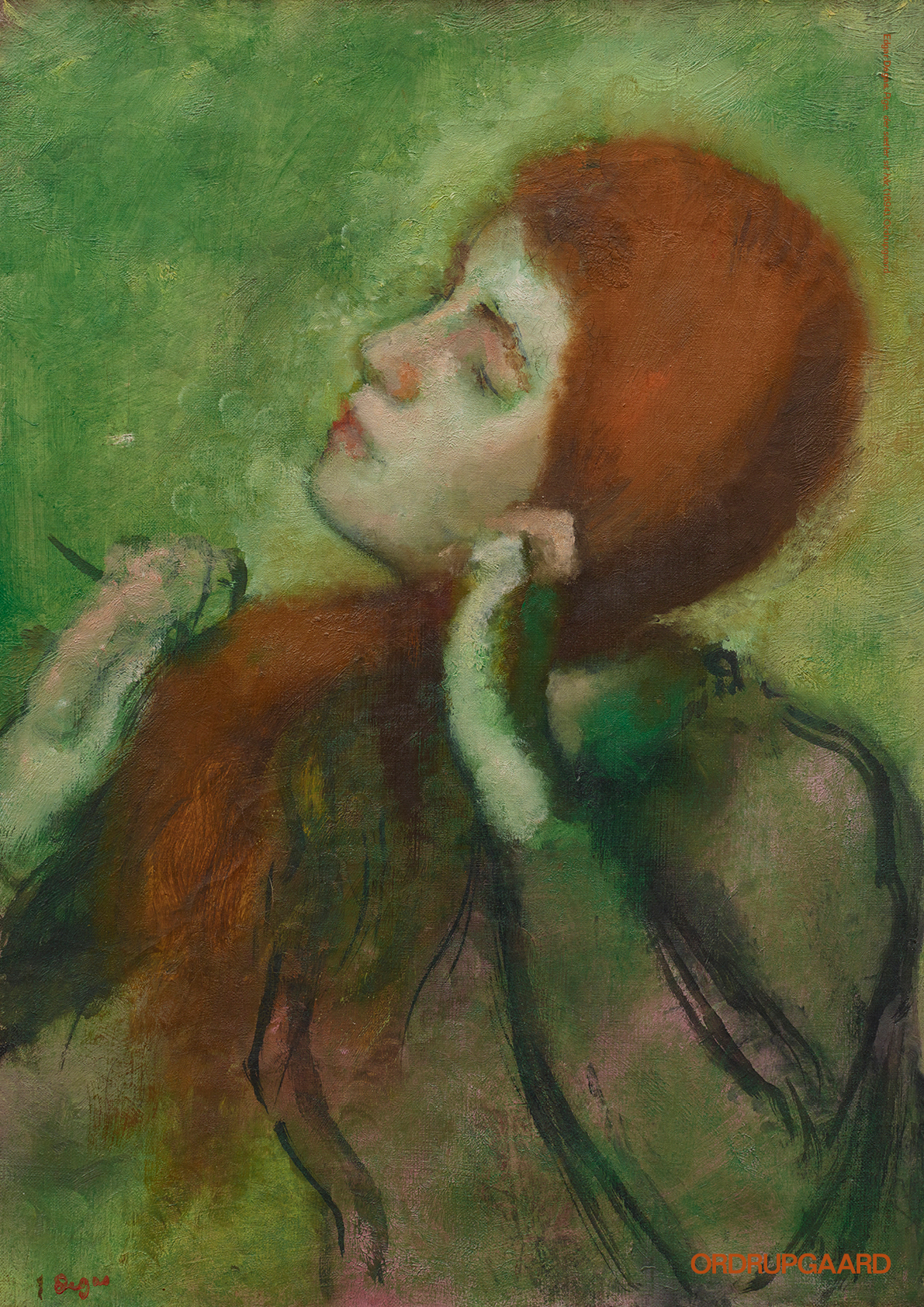
Olie på lærred
60 x 73,5 cm
1873
Woman Arranging Her Hair
Pastel på papir opklæbet på lærred
625 x 488 mm
1878
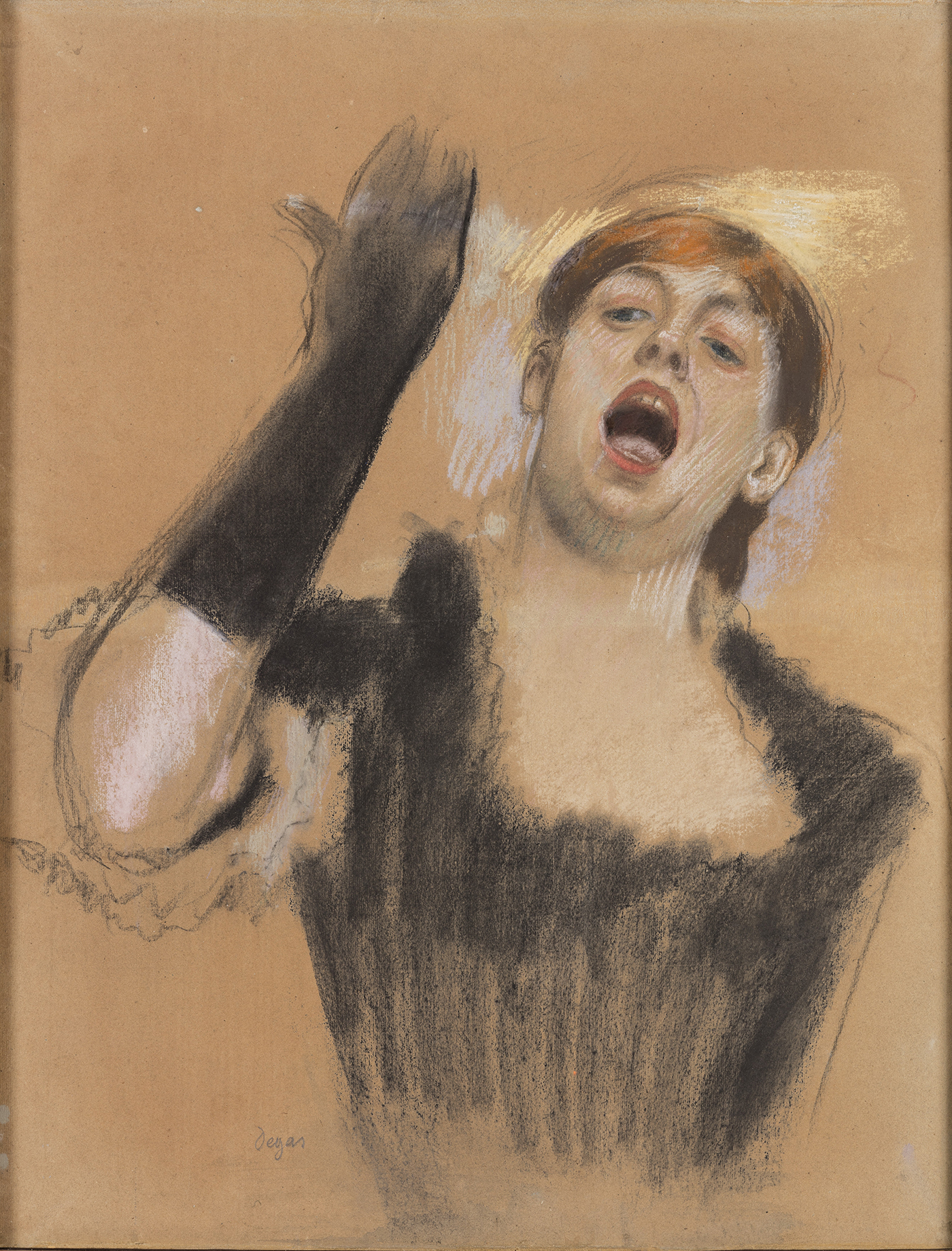
Olie på lærred
60 x 73,5 cm
1873
Singer with a Glove
Pastel på papir
559 x 456 mm
ca. 1879
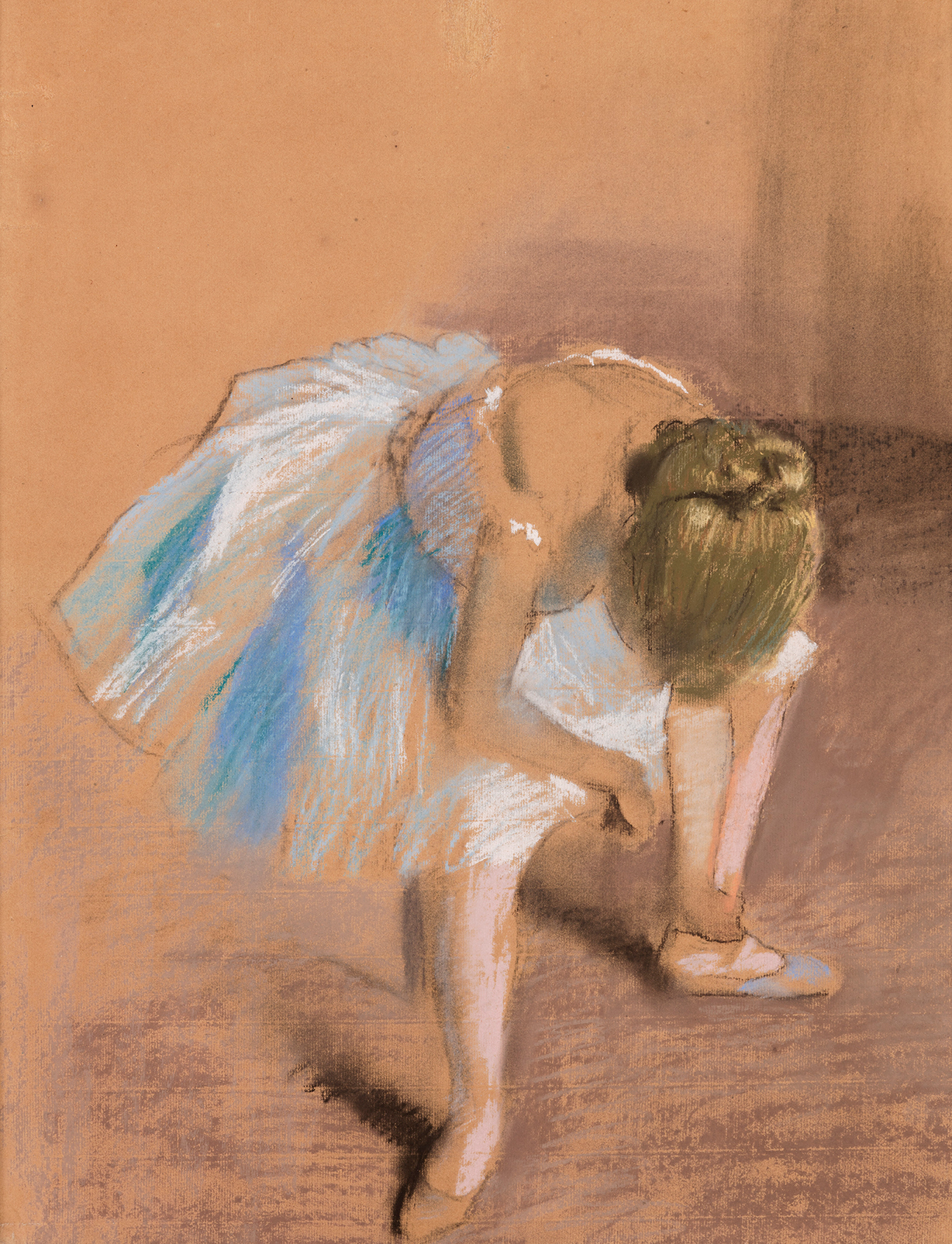
Olie på lærred
60 x 73,5 cm
1873
Dancer Adjusting Her Slipper
Pastel på papir
620 x 460 mm
1880-85
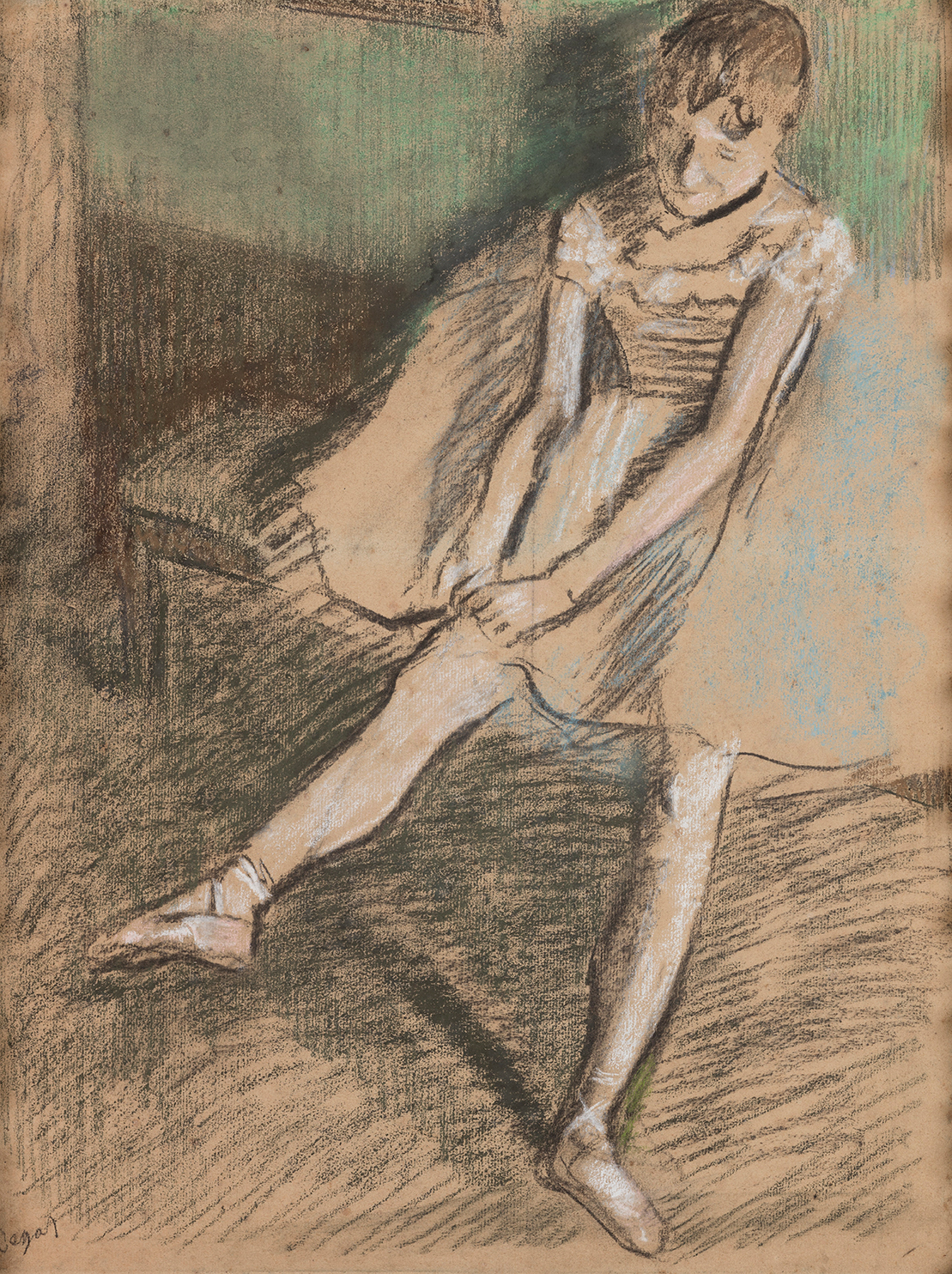
Olie på lærred
60 x 73,5 cm
1873